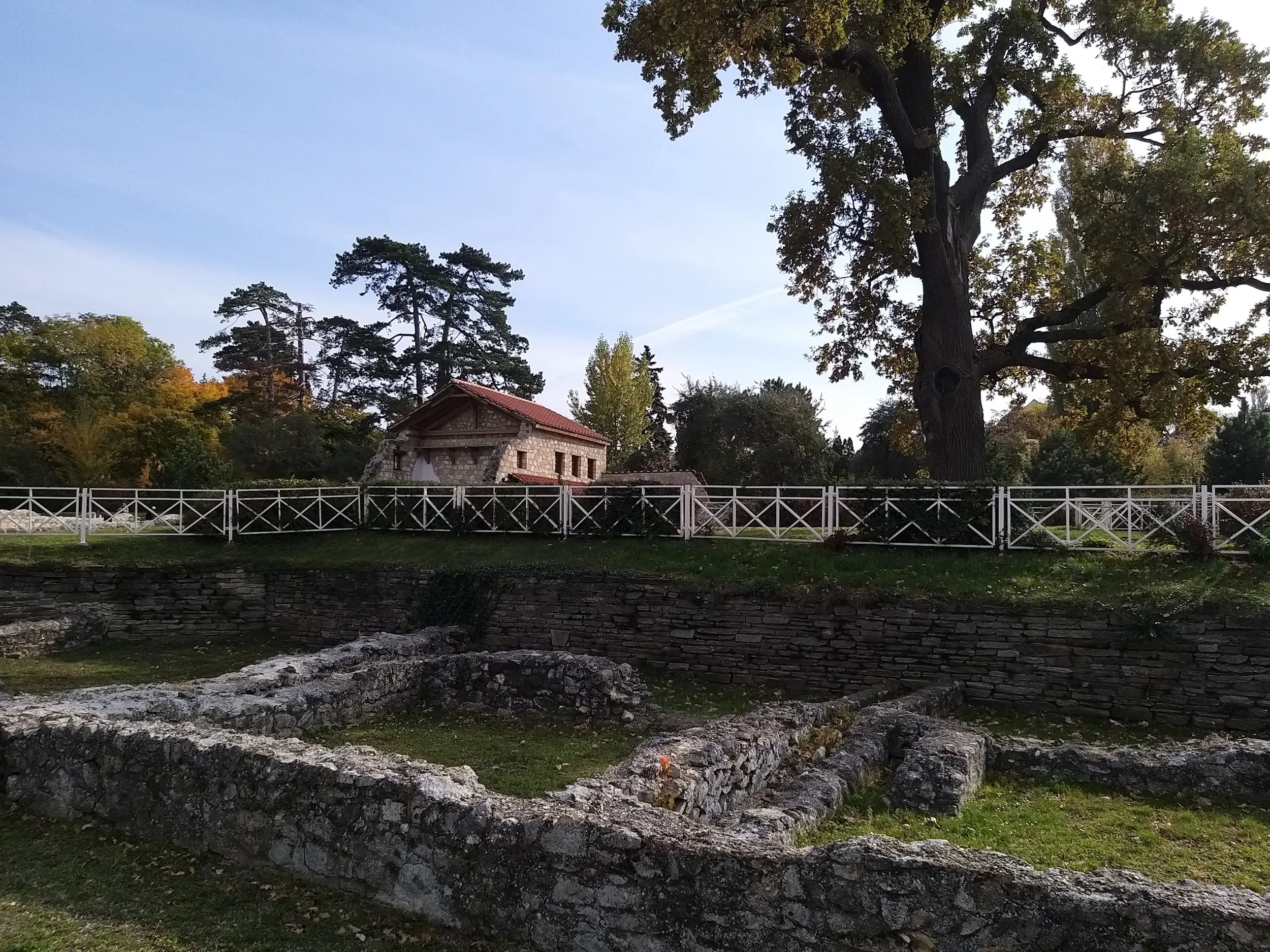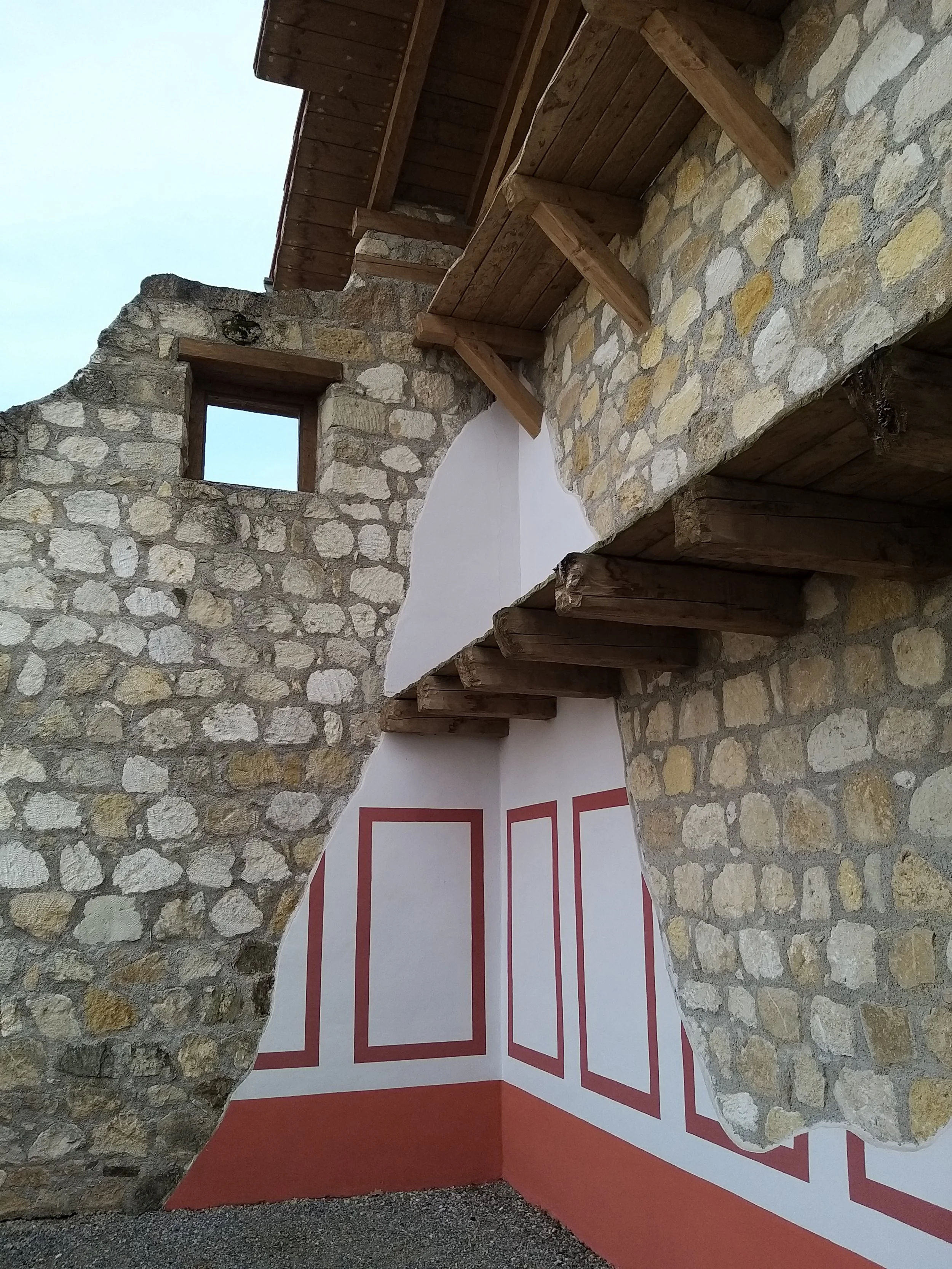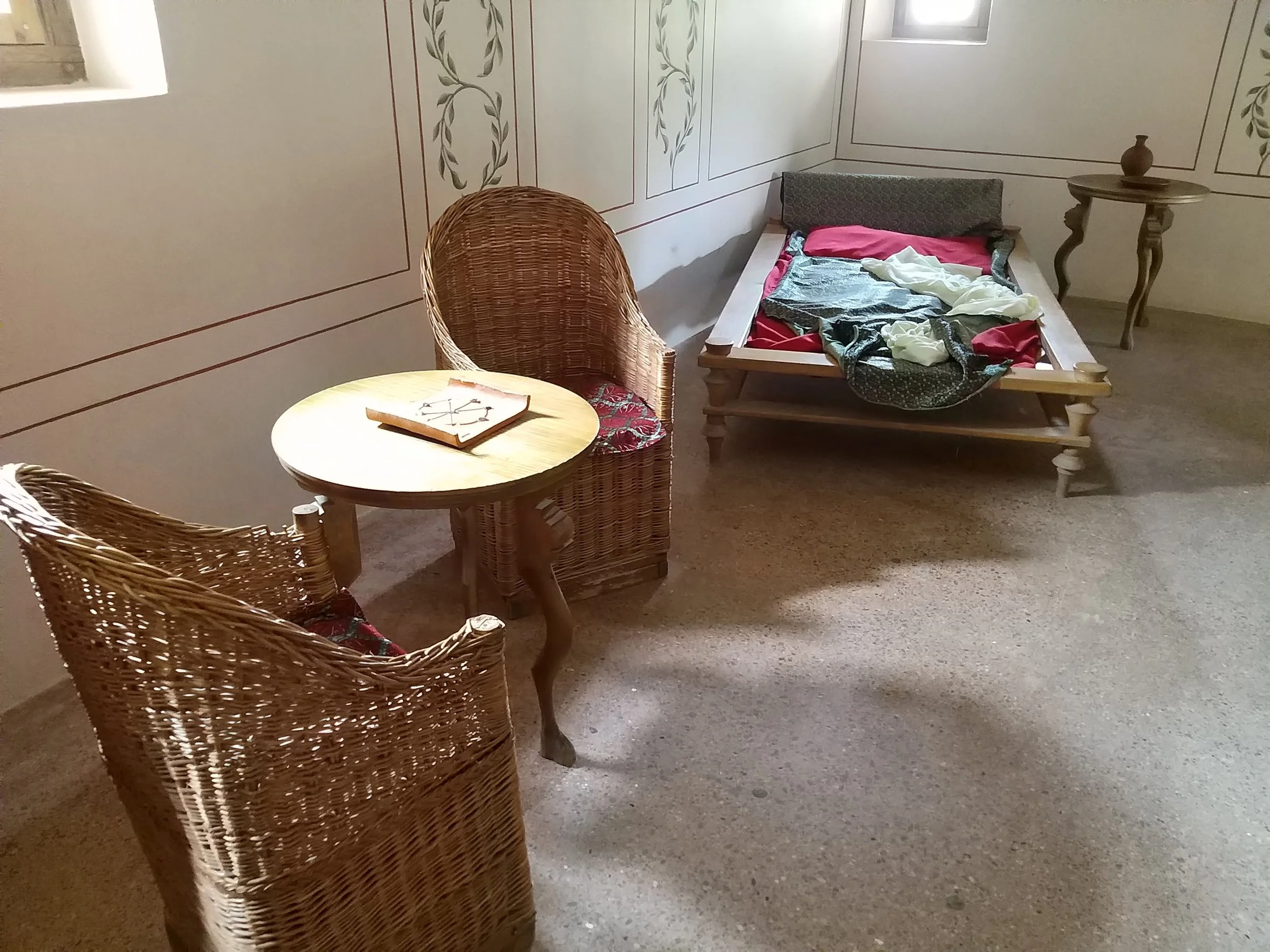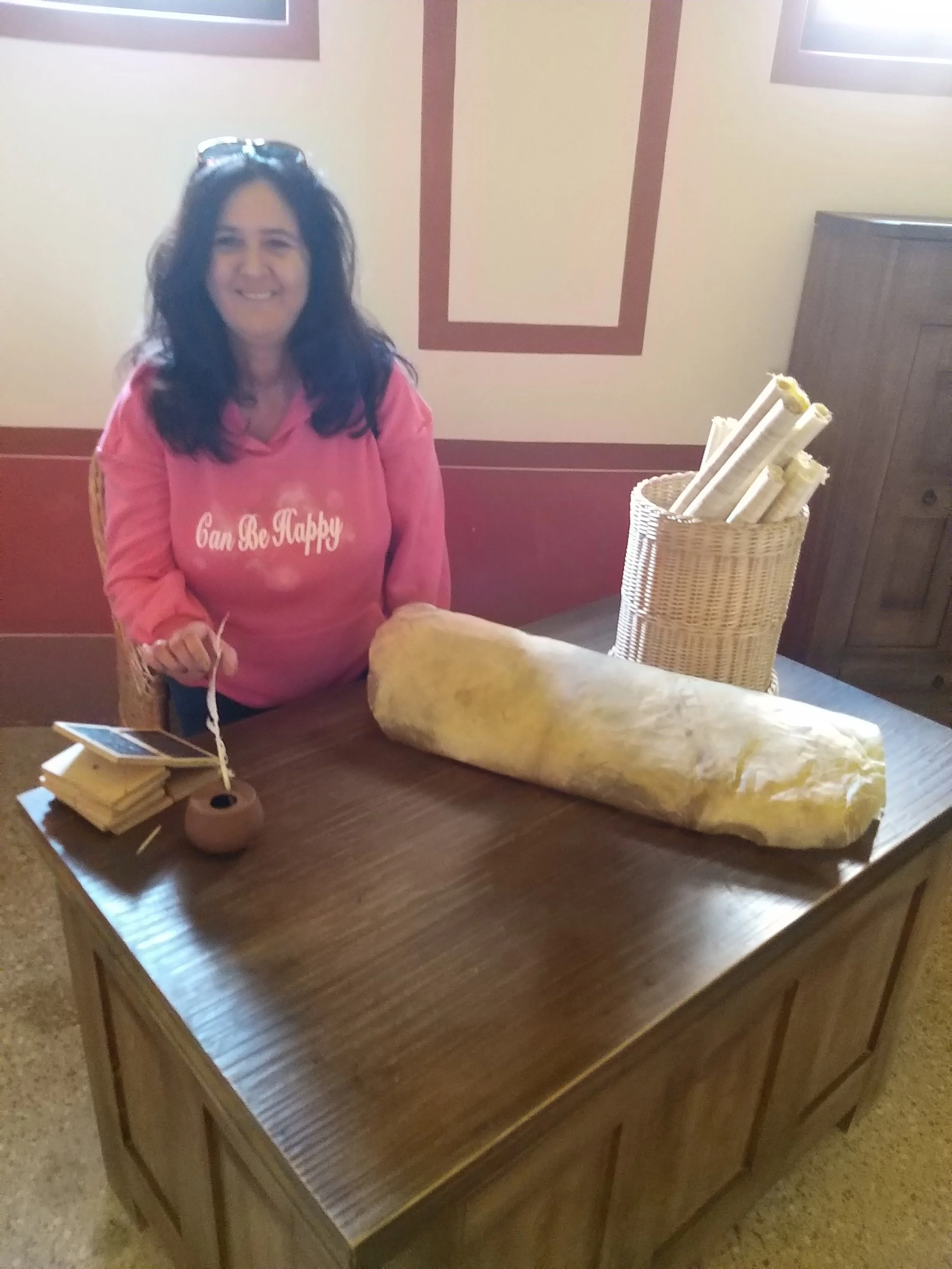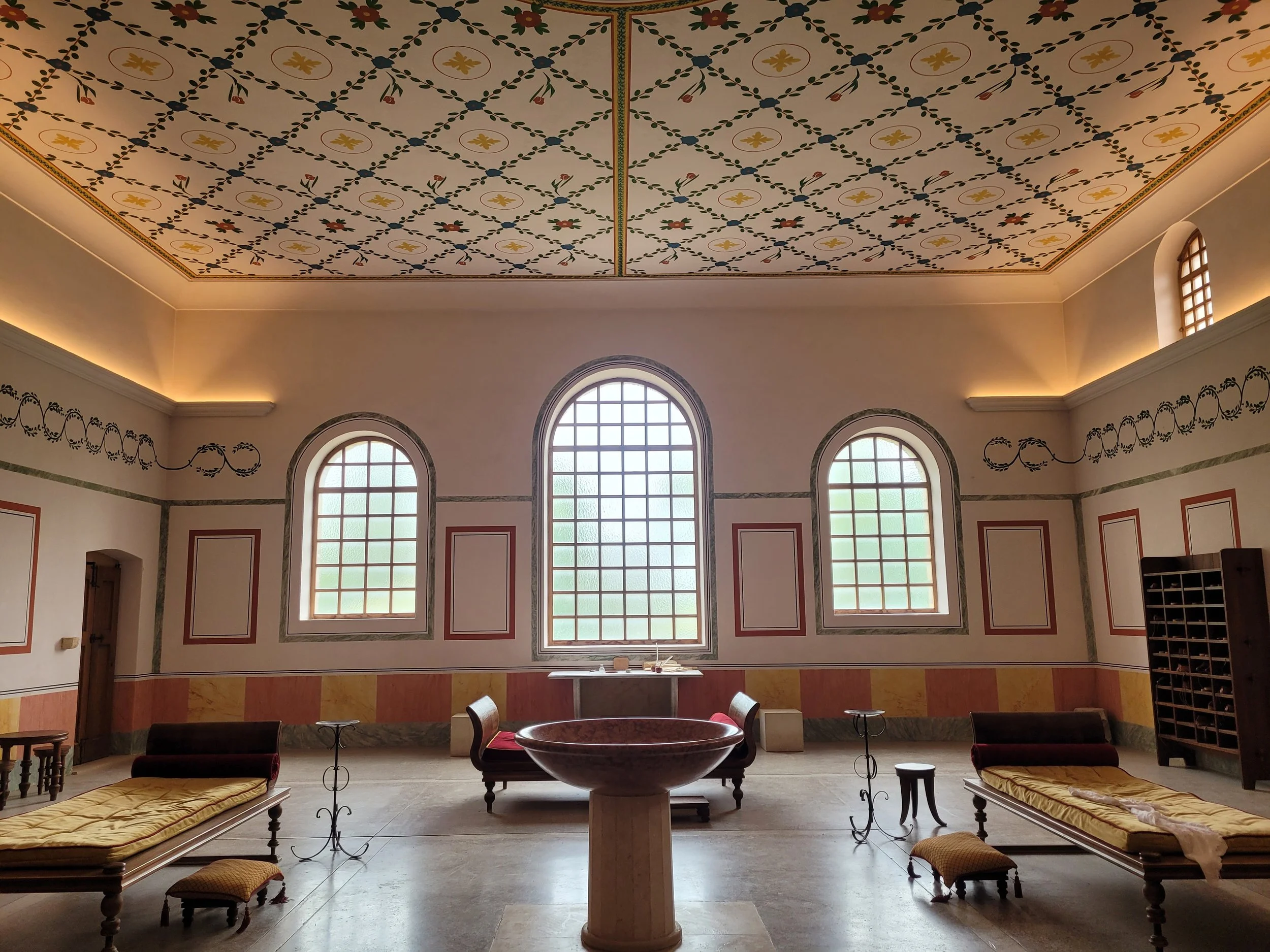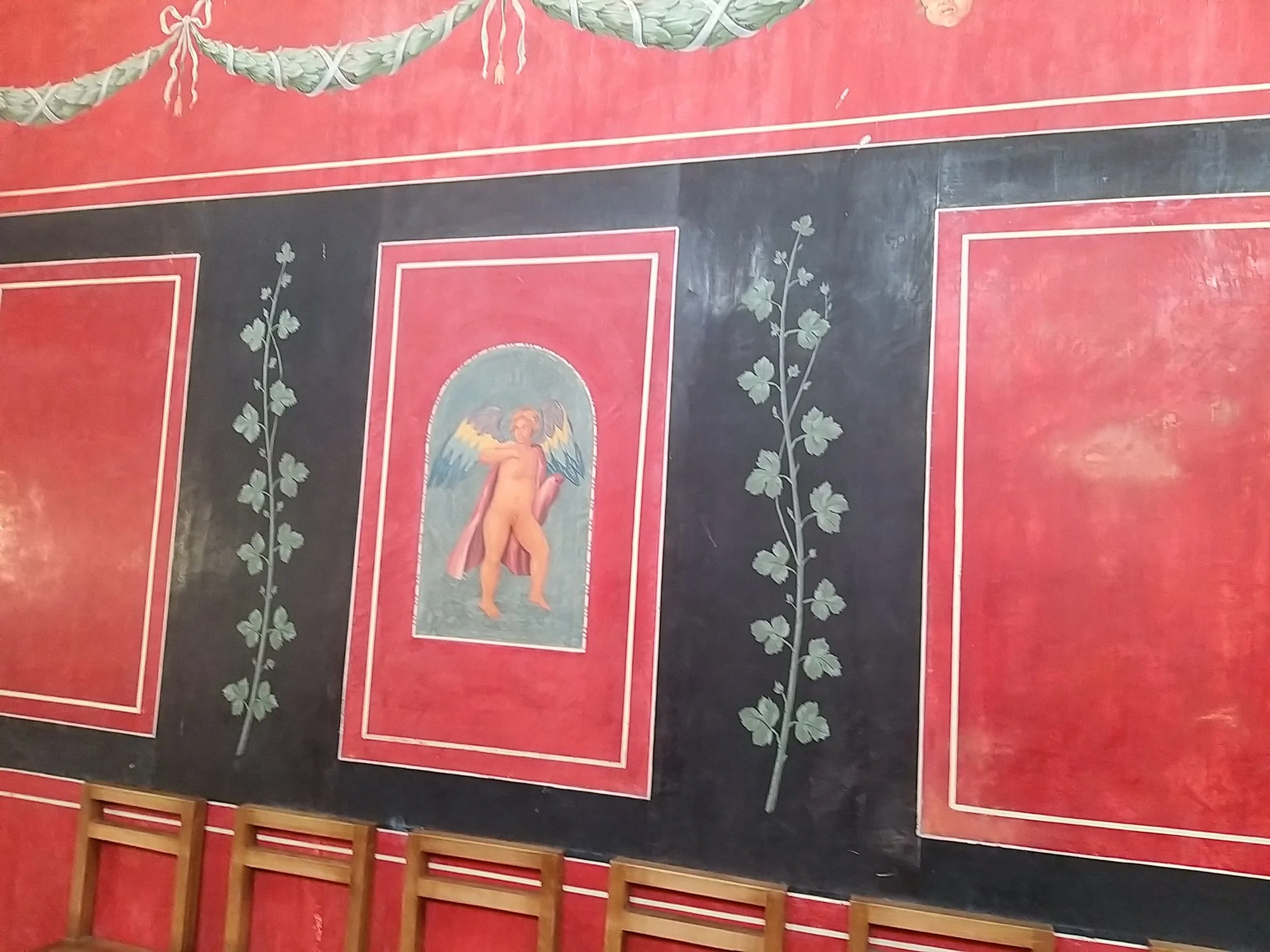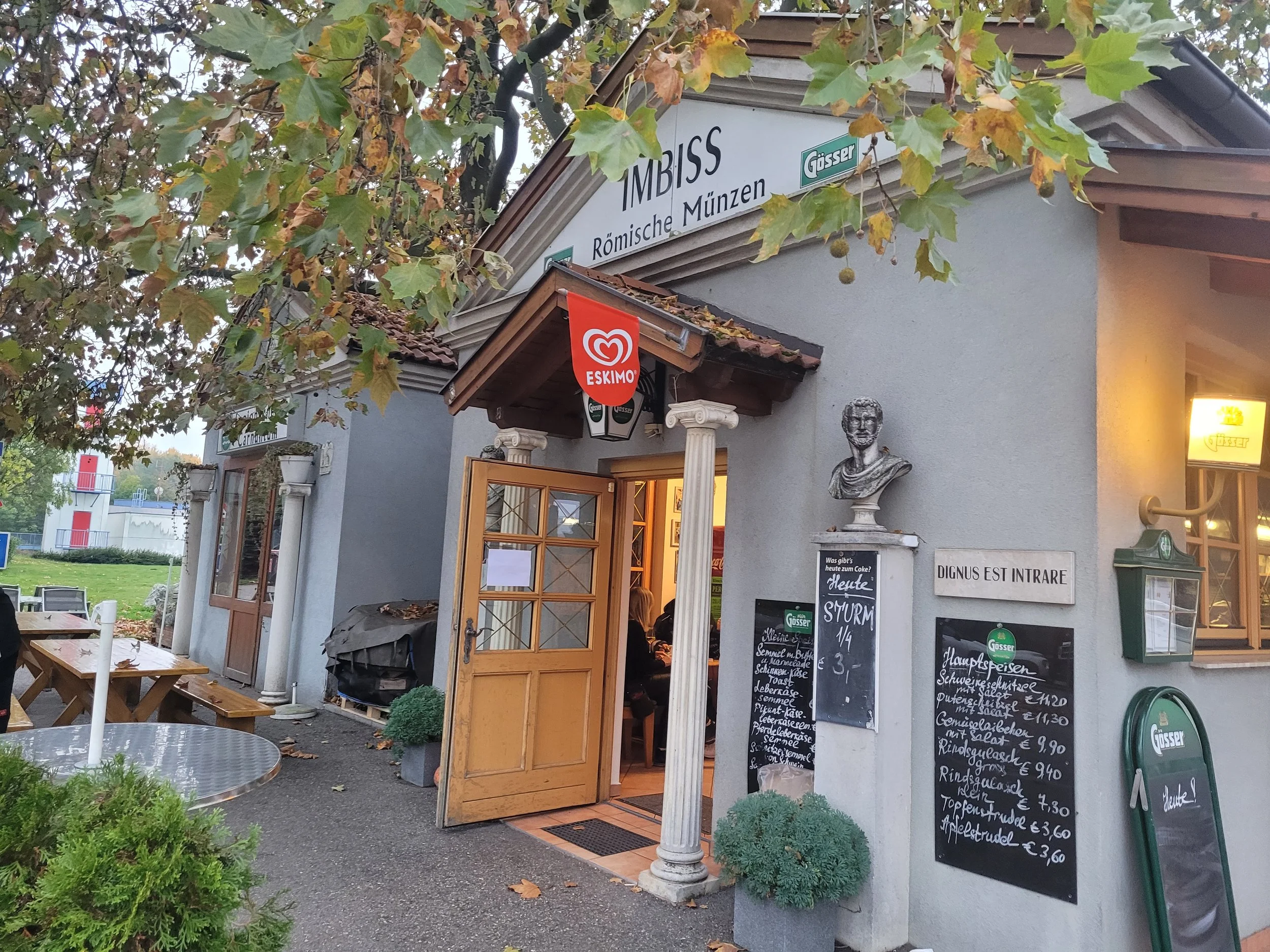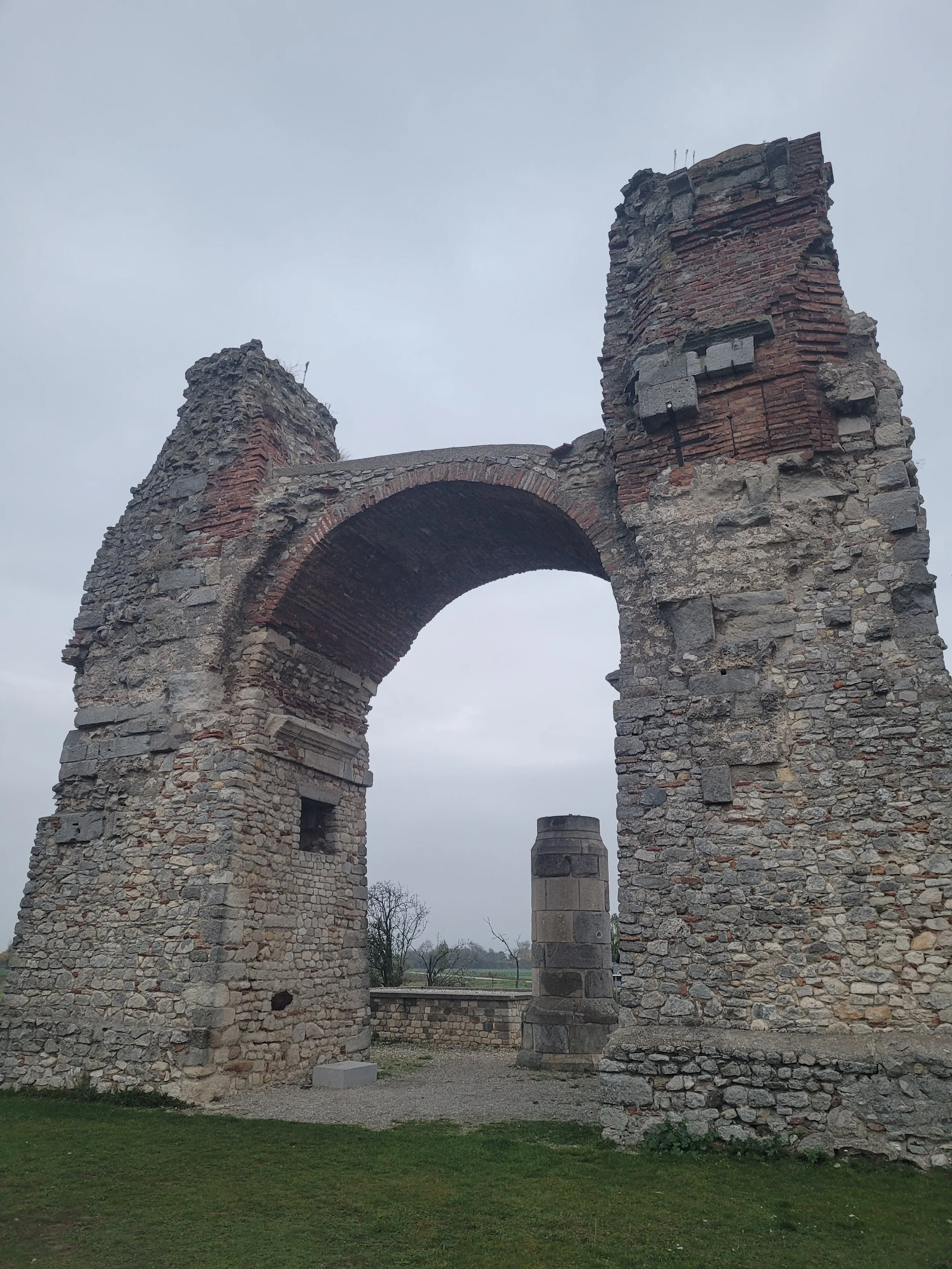Carnuntum
For today, we planned a special outing. Together with my sister, my nieces, and a friend, we took the train to Carnuntum.
This Roman settlement has fascinated me since I was a child. One of my fondest memories is playing between the excavations with my sister, imagining what life must have been like back then.
Carnuntum, located about 40 kilometers from Vienna, once had around 50,000 inhabitants.
When I was a child, you could only visit the excavations themselves. Since then, the buildings have been reconstructed, which leads to a better understanding of everyday Roman life.
Today, you can walk through the houses, which have been furnished as authentically as possible based on excavations and research findings. Often, behind the houses, there are gardens where original plants are grown.
In addition to furniture such as beds, sofas, cupboards, and even desks, you can also see everyday items like dishes or clay pots.
Many things can be tried out yourself – sitting down on one of the chairs, writing a text with a quill at the desk – this way, history becomes tangible.
Heating was done back then using underfloor heating, and visitors are clearly shown how it worked.
There are also functioning kitchens where, on certain days, dishes are prepared according to Roman recipes.
We were lucky that today was a holiday, so we could actually try some of the dishes. There was grain with vegetables in one house, and in another, various sweets were presented.
In one of the show kitchens, the vegetables that once grew in the region are displayed, as they were the main ingredients of the dishes.
Even a thermal bath was reconstructed as authentically as possible. When entering the building, you immediately feel the warm air.
The pools are filled with thermal water. There are changing rooms and relaxation areas with beds.
Even the wall paintings have been considered in many places.
We strolled through the wonderful site for hours. We visited several houses, but also let the children romp on the playground – and not just the children.
Afterwards, we treated ourselves to a snack in a small restaurant before heading to the amphitheater.
This once held more than 10,000 visitors. It still looks exactly as I remembered it from my childhood.
Next, we went to the Heidengate from the 5th century, which was probably once either an honorary monument or a triumphal arch.
Today, only one of the arches remains.
The Heidengate is freely accessible. Around it, information boards explain what it once looked like.
It was already dark when we arrived back at the train station. Less than an hour later, we were home again. I will keep visiting Carnuntum, as it has fascinated me since I was a little child.


